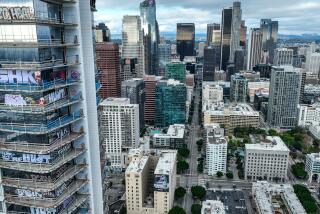Review: For the black artists of CAAMâs âL.A. Blacksmith,â metal has meaning
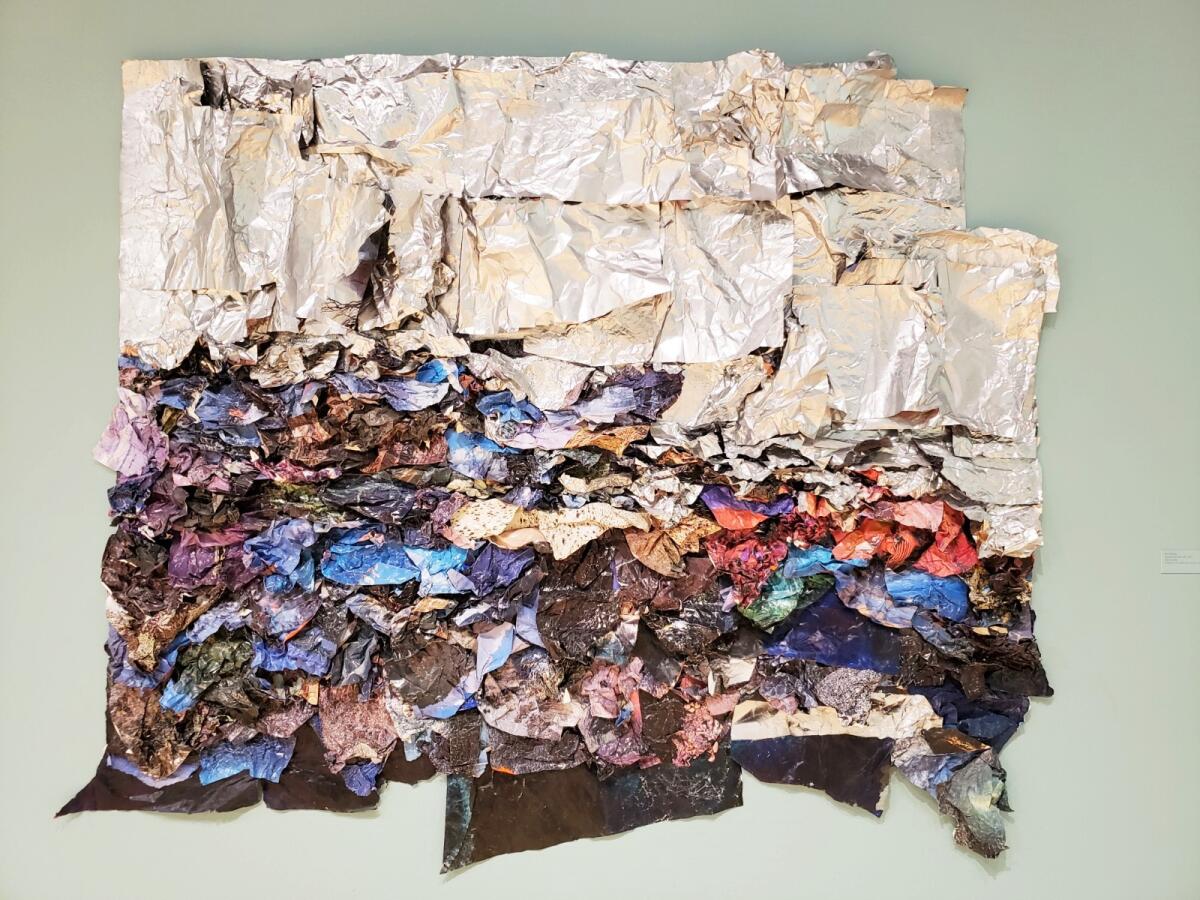
âTraveling Like the Lightâ is a large, almost paper-thin wall relief gorgeously composed of overlapping rows of crumpled and then flattened metal sheets. It looks like something tossed into a giant wastebasket and then, on second thought, retrieved and reexamined.
Artist SunĂŠ Woods wedged color between richly painted black fragments along the bottom and shiny, glittery, light-reflective silver across the top. The multihued shards were apparently clipped from printed signage and packaging. Up close you might glimpse a fragment of landscape or other vaguely recognizable image, but nothing comes fully into focus.
Instead itâs an absorbing abstraction with the layered look of something like a cross-section of earthy sedimentary rock. The smoothed-out material suggests a reconsideration of deep, unseen historyâs value.
In a sense, thatâs the subject of âL.A. Blacksmith,â the engaging new group exhibition at the California African American Museum in which Woodsâ wall relief is included. Independent curator jill moniz â she spells her name in all lowercase letters â looks to a hitherto unexamined strain of metalwork as integral to black L.A. artistsâ work, mostly since the 1960s.
The earliest piece, however, dates back another quarter-century, to around 1935. A provocatively composite mask by Beulah Woodard (1895-1955), who lived in Vernon, is made from sheet metal over wood, the surface visually softened with a coppery patina. Woodard, the first black artist to have a solo show at the old Los Angeles County Museum of History, Science and Art, precursor to LACMA, fused two traditional African forms into something new and unexpected.
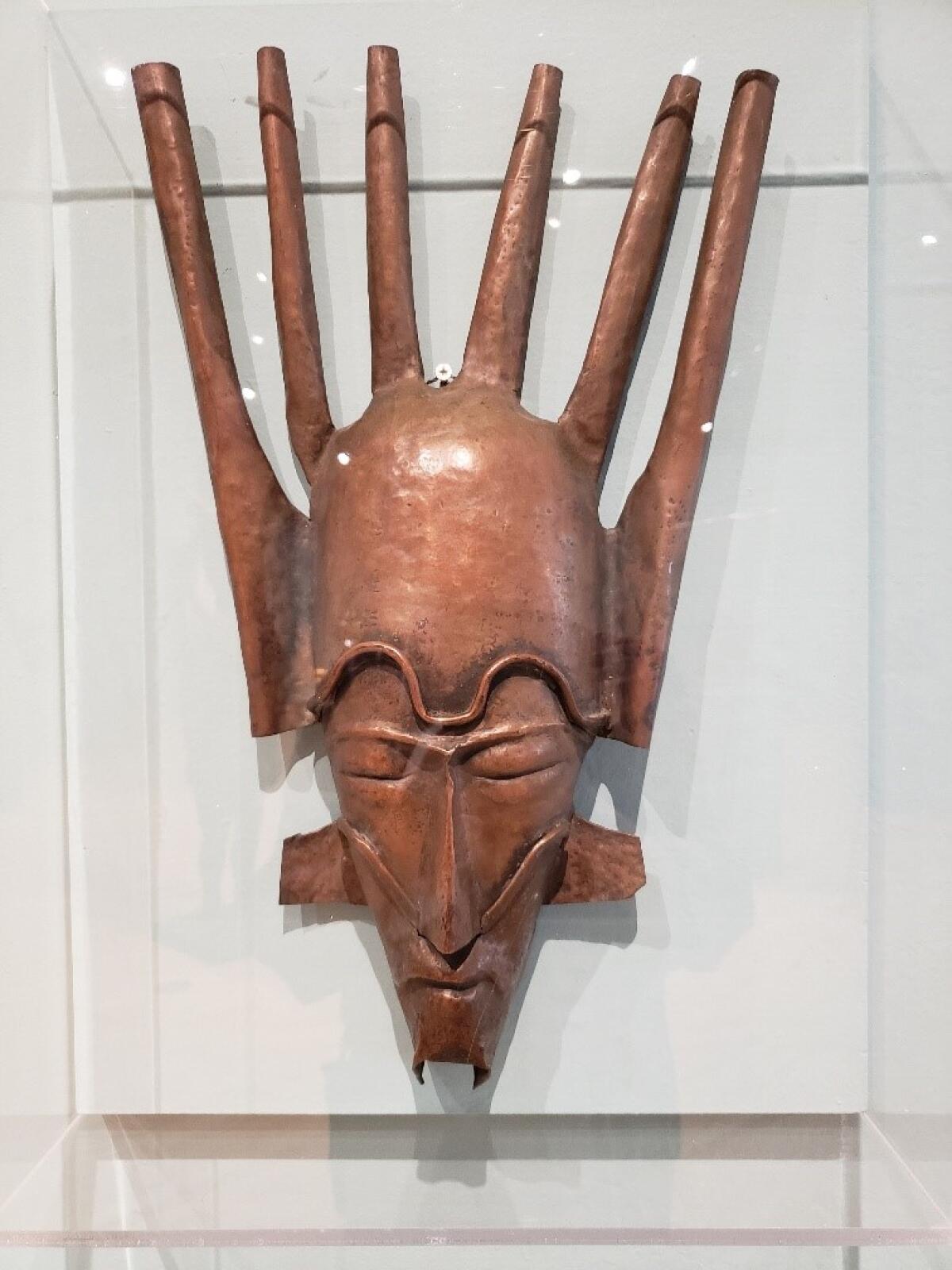
One is the elongated, slender triangular face with raised, ritual scarifications familiar from so-called Kota reliquaries made in Gabon. These are among the elegant guardian figures whose sophisticated formal abstraction was one famous inspiration for Picassoâs Cubist revolution.
The other is the Nâtomo masks of the Bambara (or Bamana) people of modern-day Mali, southwest of Algeria. Quickly identified by the comb of vertical spikes rising atop the head, these ritual masks were used at male initiation ceremonies.
In Woodardâs deft hands, the fusion of the two performs its own heady conceptual dance. Itâs as if Modern art is identified as the revered relic being guarded, while the centrality of Africa to Modernismâs maturity is embodied.
Installed adjacent to Woodardâs unassuming âMaskâ are two fine examples of Melvin Edwardsâ extensive series of âLynch Fragmentâ sculptures, launched when colonial rule was breaking apart in several African nations. These date from around the time of the 1965 Watts rebellion. Rough, chunky welded clusters of gears, chains, horseshoes, hooks and other manufacturing remnants speak to a legacy of labor â past and present, enslaved and free.
Edwards affixed these clusters to the center of wall-mounted steel disks, perhaps partly inspired by the boiler tops in David Smithâs celebrated âtanktotemâ sculptures of welded steel. The result looks like industrial-strength tribal shields composed from a union of consciousness and historical memory.
Nearby, three strange and witty sculptures from the early 1970s by Ed Love take a more pop attitude. The trio merges shiny, up-to-the-minute L.A. car culture with imposing, ancient African origins.
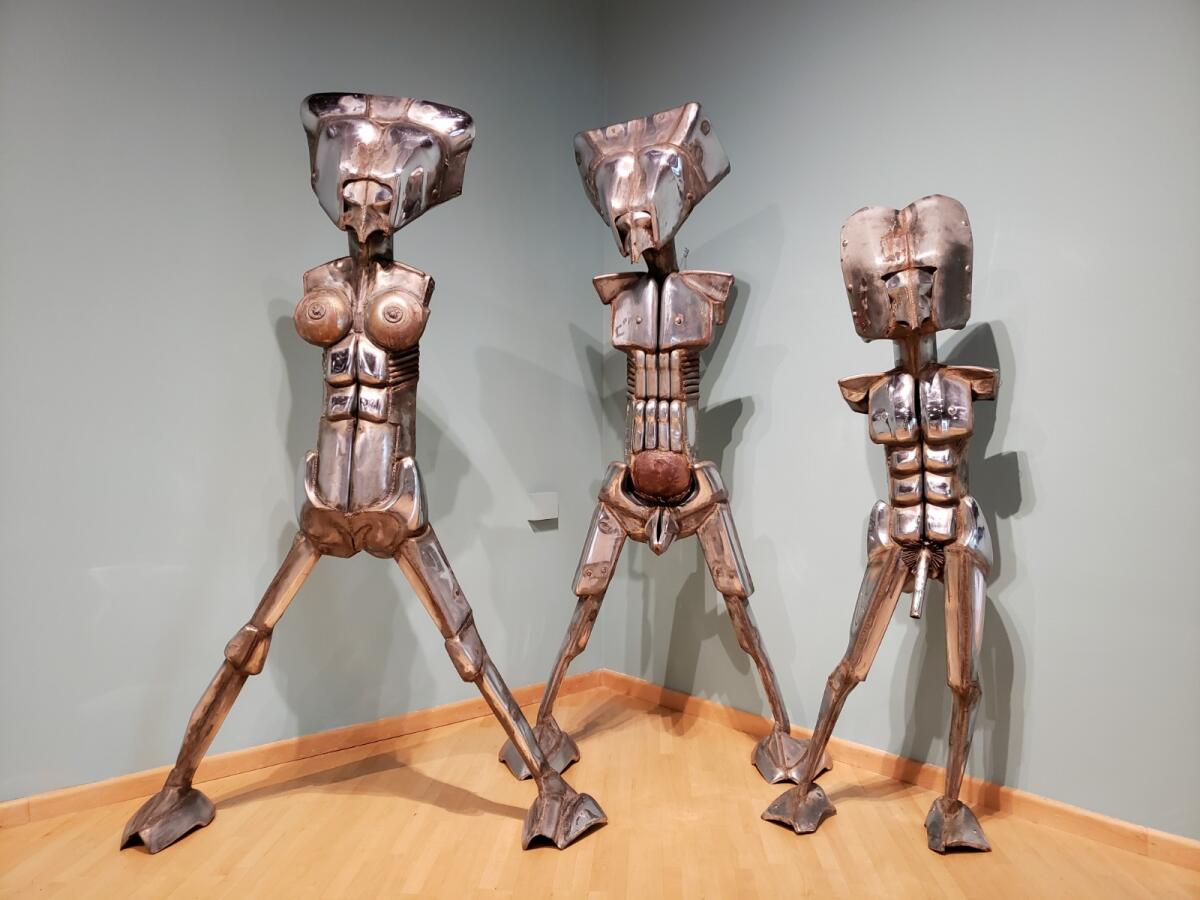
Looming figures of epic Egyptian deities â Osiris, lord of the underworld; Isis, mother of the gods; and, Horus, their royalty-protecting son â are cleverly fabricated, mostly from hefty automobile bumpers welded together into limbs, torsos and other body parts. Think toy-like Transformers gone gigantic, a makeover that is more playful than profound.
The exhibition takes an expansive view of what constitutes blacksmithing â you wonât find much evidence here of the hammer and forge â as well as its distinctive sub-Saharan traditions. (The show might owe something to last yearâs marvelous âStriking Iron: The Art of African Blacksmithsâ at the UCLA Fowler Museum, which travels to Parisâ MusĂŠe du quai Branly-Jacques Chirac in November.) Works like these tie African themes and American social engagement with various forms of contemporary metalwork.
But sketching out a new history is best achieved by a generous perspective, so the willingness to roam far and wide is constructive. Among the 20 artists are established figures including Kori Newkirk, John Outterbridge, Noah Purifoy and Betye Saar. In addition to Woodsâ crumpled wall relief, a pedestal sculpture of expensively gilded basketball shoes by Kendell Carter stands out among works by a mostly younger generation of artists.
Carterâs work has always featured a deep dive into the minutiae of popular culture, coaxing forth ethical values from the amorality of commercial life. This compelling sculpture is no different. Plating a pair of Air Jordans in gold pits the weight of the metal against the lightness of the brand, while materializing the commercial value of both the product and the NBA player for whom the shoes are named.
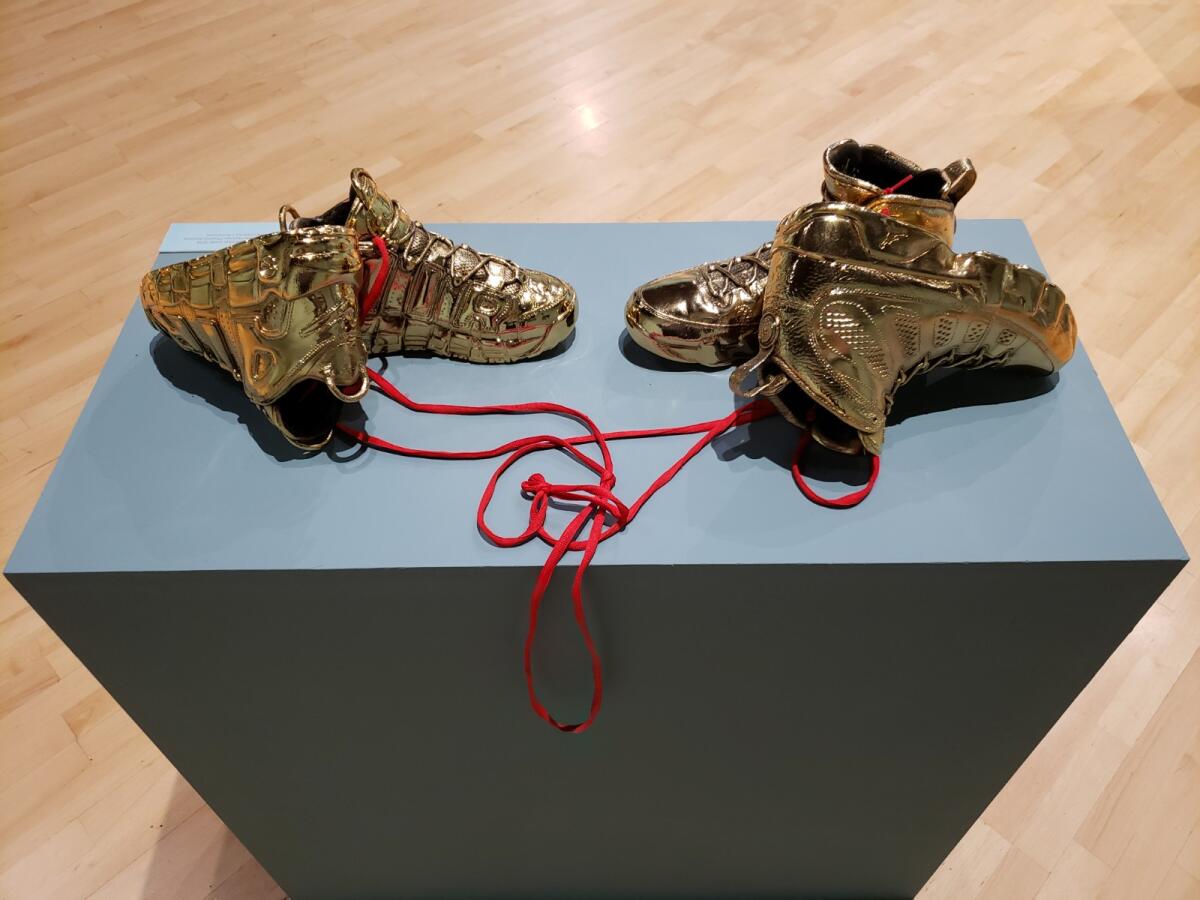
Yet, thereâs much more here than an obvious nod to art and commerce. To get really specific, the shoe style is the Jordan 9, issued in the immediate wake of Michael Jordanâs sudden retirement from the powerhouse Chicago Bulls. One shoe is placed toe to toe with another from a second gilded pair. These are Nike Uptempo shoes, the style branded by his incomparable teammate, Scottie Pippen.
In each pair, the second shoe is tipped upside down. The gilded sneakers share an umbilical tangle of crimson shoe laces. For a culture that worships the singularity of individual success, the synergetic dynamism of being a team player, which those two brilliant superstars were, is offered instead.
âEffigy for a New Normalcy, Love Like Michael Loves Scottie,â the sculptureâs title advises. Same-sex ardor comes in many productive forms.
'LA Blacksmith'
Where: California African American Museum, Exposition Park, 600 State Drive, L.A.
When: Through Feb. 16; closed Mondays
Admission: Free
Info: (213) 744-7432, www.caamuseum.org
More to Read
The biggest entertainment stories
Get our big stories about Hollywood, film, television, music, arts, culture and more right in your inbox as soon as they publish.
You may occasionally receive promotional content from the Los Angeles Times.


